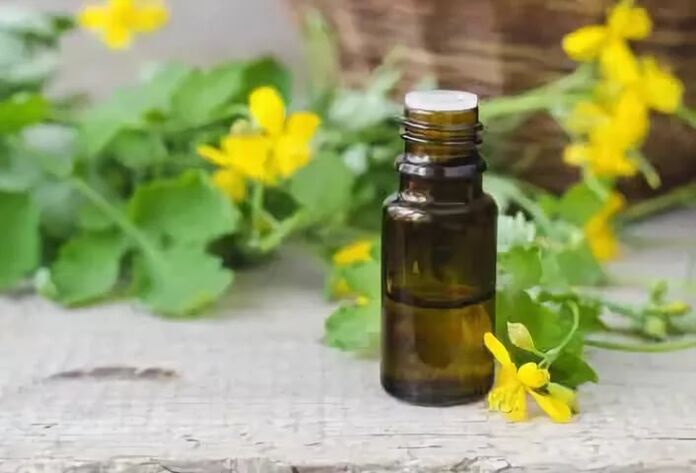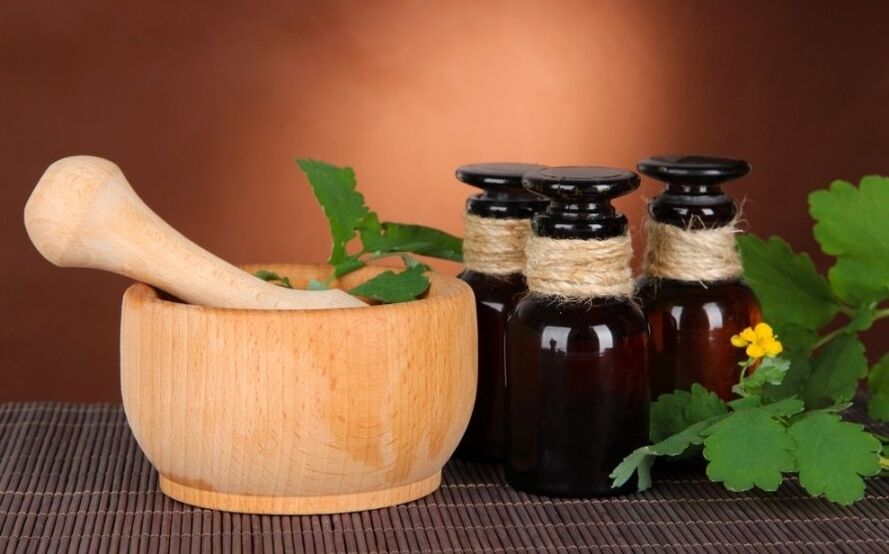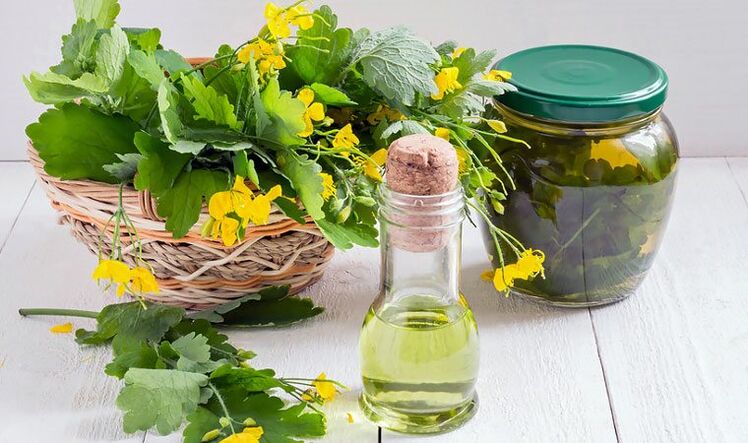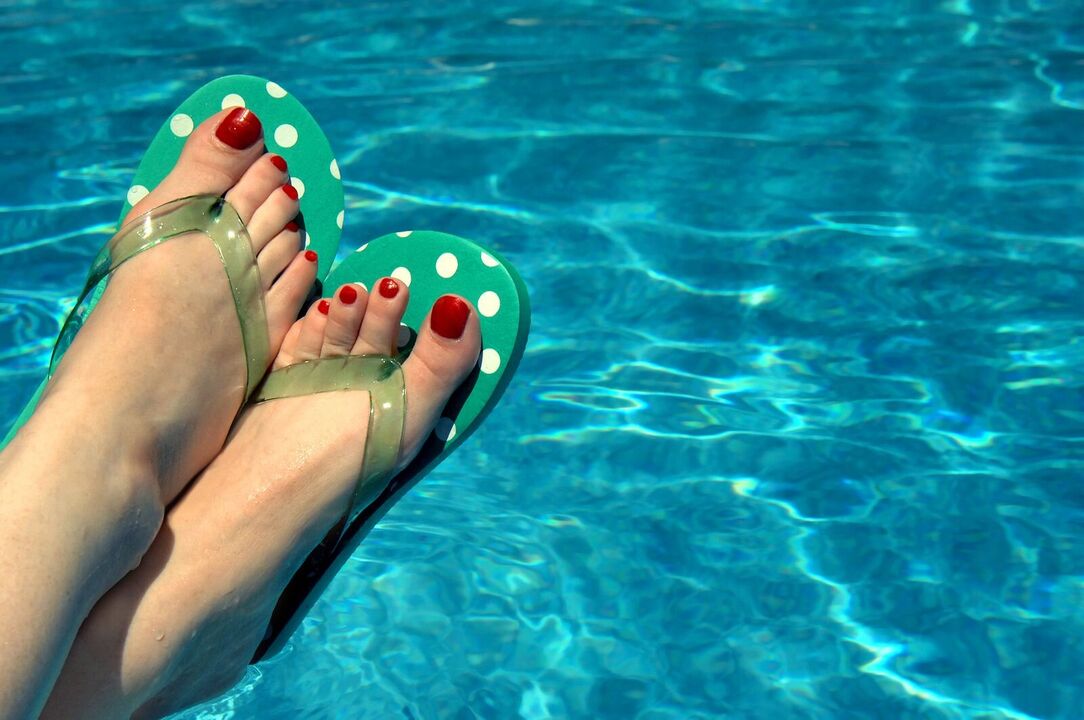
It is necessary to treat fungal diseases of the nails when the first signs of the disease are detected, since it becomes more difficult to cope with a neglected disease. In addition, the infection can spread to other nails, surrounding skin, and interdigital folds. If we talk about the treatment of this disease at the initial stages, then without the use of drugs, it can be cured using folk recipes. Celandine from toenail fungus is considered a particularly effective remedy.
Fungal infection of superficial tissues
The fungus that lives on the nails feeds on the creatine contained in the plates. This leads to chipping and discoloration of the nail.
It loses its shine, elasticity, can grow thicker or thinner, grow poorly and become covered with waves. The disease most commonly affects the toenail, since the warm, damp environment in shoes, on the floor in saunas, baths and swimming pools is favorable for the fungus.
It is not uncommon for pathogens to be resistant to many drugs that pharmacies offer us for the treatment of onychomycosis. As a result, therapy with these drugs does not bring the expected results and leads to a waste of money.
Many active ingredients in herbal remedies do not cause resistance in fungi, so they are more active than synthetic preparations.
For this reason, since ancient times, various baths, creams, oils and tinctures based on celandine have been used to treat the nail, to which many species of fungi still have no resistance.
A fungal infestation is eliminated particularly effectively when using celandine oil, as all active ingredients are largely retained.
Properties of celandine

Celandine contains about 20 alkaloids, as well as chelidonine, which slows down the development of microorganisms that cause various forms of mycoses.
Thanks to alkaloids, the reproduction of a fungal infection is suppressed, as are protozoa and bacteria resistant to many antibiotics.
In addition, the composition of the plant includes the following active substances:
- tannin compounds;
- phenolic acids and organic acids;
- a small amount of essential oils;
- choline and histamine;
- carotene and vitamin C;
- enzymes;
- saponins;
- flavones.
Many alkaloids are more soluble in alcohols than they are in aqueous compounds. And berberine, which gives the yellow color to the juice of the plant, dissolves only in hot water.
Before you start treating nail fungus with celandine, you should consult a doctor, since the alkaloids of this plant are poisonous substances.
Of course, when applied externally, they do not have a toxic effect on the body, but if ingested, they can lead to dangerous consequences.
In a pharmacy you can buy liquid celandine from nail fungus. It must only be used in extreme cases as it contains concentrated alkalis.
This tool destroys cells with microorganisms (fungi and viruses) settled in them. Because of this, this medicine must be applied very carefully and only to the affected areas of the nail.
Pharmaceutical preparations made from celandine
Before treating nail fungus disease, it is necessary to understand the properties and effects of drugs based on this plant. Due to the low volatile content in celandine, no essential oil is made from it.
Oil extracts from the flowers of this medicinal plant are used in cosmetics and pharmacology.
The oil extract from the pharmacy contains an almost complete set of FCS from this herb. This remedy is used only externally without dilution.
The therapeutic effect is explained by the corrosive, antimicrobial and keratolytic effect of the drug on the affected skin and horny plates.
Celandine Oil Extract moisturizes, softens and cleanses the skin and calloused formations, eliminates peeling, irritation and dryness.
Nail fungus can be cured with this oil, but an allergy test must be done before use as celandine can cause hives. To do this, oil is dripped onto the skin of the wrist and the result is evaluated after a quarter of an hour.
If there is no itching, blisters, irritation or redness, it can be used for treatment.
Ointment and oil based on celandine
You can prepare ointment and oil remedy for celandine from athlete's foot and horny formations yourself at home. To do this, proceed as follows:
- You need the top part of the shoots of this plant. They need to be cut and washed thoroughly.
- We wait until the grass wilts a little, then grind it and squeeze out the juice.
- Pour this juice with vegetable oil boiled in a water bath for disinfection.
- The remedy must be infused for an hour in the dark.
- Then everything is poured into a dark glass bottle and left to infuse for up to three weeks.
- During this time, the oil container must be shaken regularly.
- After this time, the oil is filtered and used for treatment.
It is not necessary to collect celandine in the field, in the yard or in the forest. This plant can be grown in a box on the balcony. Dried grass from the pharmacy is also suitable for oil production. It consists in oil just like fresh raw materials.
To prepare the ointment, dry grass ground into powder and medicinal petroleum jelly are used.
Some herbalists claim that only fresh weed will help nail fungus. However, the extract of this plant has also been shown to have anti-inflammatory, analgesic and caustic properties.
Treatment of nail fungus with celandine (oil and cream) is carried out as follows:
- In the evening we steam our legs. In the bath, you can add a little soda and detergent.
- Dry the affected areas on the feet, nails and interdigital folds thoroughly with a towel. We trim the regrown edge of the nail and cut off the softened affected areas of the nail plates with a nail file.
- Apply oil or ointment to sore spots with a cotton swab or cotton pad.
- After that we put plastic bags and socks on our feet.
- The agent is left to act for ¾ hours. After that, before going to bed, rinse your legs with water and treat the affected nail plates with iodine.
Other means of celandine
Celandine for the treatment of nail fungus can be used in the form of tinctures and as part of combination remedies. Below we list the most effective recipes:
- The pure juice of the plant should be wiped twice a day on diseased nail plates after treating them with hydrogen peroxide. After the first portion of juice dries on the nail, the process is repeated two more times. Treatment will continue until recovery.
- A complex mixture based on celandine for the treatment of fungi. You will need two drops of oregano herb juice and calendula tincture, 5 drops of pure celandine juice and 120 g of water. This remedy is applied to the affected nails with a cotton pad three times a day until recovery.
- Alcohol tincture is prepared as follows: a fresh plant is washed, dried and poured with vodka in a 1 to 2 ratio. Leave for twelve days. After that, the treatment starts with five drops on each nail, increasing this amount to 20. The duration of therapy is up to two weeks.
- Baths with celandine. You will need 150 g of dry grass, which needs to be poured with boiling water (one and a half liters). The mixture should be infused for ¼ hour, after which it is filtered and boiling water (0. 5 l) is added to the infusion. In this water, the legs are steamed for about 20 minutes. After cleaning the plates from dead cells, the drug prescribed by the doctor is rubbed.
Many traditional healers recommend supplementing the treatment of feet with celandine baths with soda. To do this, we take 30 g of baking powder for 1000 ml of water (hot).
We steam the legs for a quarter of an hour, then carefully remove the affected softened areas and apply a remedy based on celandine. We bathe daily until recovery.
A good effect is also obtained by rubbing hydrogen peroxide into the affected horny formations and then treating them with a mixture of the powder of this medicinal plant and tea oil.
Treatment with the listed methods can last from 6 months to a year. This is the time it takes for a healthy nail to grow back.
During this period, it is necessary to observe foot hygiene and regularly disinfect shoes to avoid re-infection. To treat shoes, you can use vinegar or special sprays.
Recipes with celandine

Celandine for treating nail fungus with a compress:
- Fresh leaves are crushed.
- A drop of tea tree oil is added.
- The mixture is applied to the diseased nail and fixed with cling film.
- The compress is removed after 3 hours.
- Application is allowed up to 3 times a week.
Celandine for treating fungal applications:
- The leaves of the plant are placed in a jar and doused with sunflower or olive oil to cover the grass a few inches.
- The mixture is stored in a dark room for several hours, then the jar is placed in a cool place for 2 weeks.
- A cotton pad is moistened with the resulting oil and applied to the affected area.
- Fingers are covered with cling film for 2 hours.
- The drug is washed off, the foot is treated with an antiseptic.
contraindications
Before treating nail fungus, it is important to rule out contraindications. Pure juice and tincture of celandine are unacceptable in case of an allergic reaction and hypersensitivity to the composition of the herb.
An absolute contraindication is the use of the drug during pregnancy and lactation, as well as in childhood.
When applying celandine, you need to monitor the reaction of the skin. With severe irritation, hyperemia and rash, you will have to abandon this option for the treatment of nail fungus.
It is not recommended to use celandine juice in its pure form, so regardless of the recipe, it must always be diluted with warm water.
Celandine has a pronounced disinfecting effect, therefore in a short time it kills all pathogenic microflora. Before using recipes with this poisonous plant, you should consult a dermatologist. The doctor will tell you whether it is possible to treat nail fungus with celandine, what are the contraindications and risks.
Measures against nail fungus

You can protect yourself from the fungus simply by observing the rules of hygiene and timely preventive measures.
- In all public places (beaches, showers, changing rooms, swimming pools, spas, etc. ) we wear slippers that are easy to wash. If there is a risk of infection, do not go barefoot!
- We don't wear anyone else's shoes (including slippers at a party - it's better to go in socks).
- We do not use other people's towels and manicure accessories.
- Coming out of the bathroom, we put our feet not on a common (and often wet, not the first freshness) carpet, but on our own towel (provide it in advance for such purposes).
- Check feet and nails regularly for signs of fungal infection. At the slightest symptoms (cracks / itching between the fingers, the color of the nail has changed, etc. ) we intervene. That means we buy ointments, special / lacquers, etc.
- We try not to use tight, narrow shoes, as well as shoes made of inferior materials.
- We regularly treat the inside of our shoes with antiseptics.
- To prevent feet from sweating, we use deodorants, talcum powder, etc.
- We only use cotton socks. If it is necessary to use pantyhose / stockings (products made of nylon and other synthetic fabrics), then at home we need to remove them, steam the legs and process.
- When it's hot, we wear open-toe shoes - for ventilation and free air exchange. Sweaty feet are a breeding ground for bacteria.
- We don't measure shoes in stores without socks/footprints - on bare feet.
- We wipe our feet dry after the bath, including the spaces between the toes - that's where the fungus starts.
- We do not allow cracks on the feet - we use moisturizers.
- Wash your feet with antibacterial mild soap.
- If there is a high risk of infection (e. g. on vacation or at the swimming pool), we use antifungal creams, powders or aerosols.
- Dry your shoes thoroughly if they get wet. We do not wear wet shoes/boots.
- For pedicures / manicures, we only select proven salons.
- We do not allow wringing, ingrowth and deformation of nails - we take timely action.


























